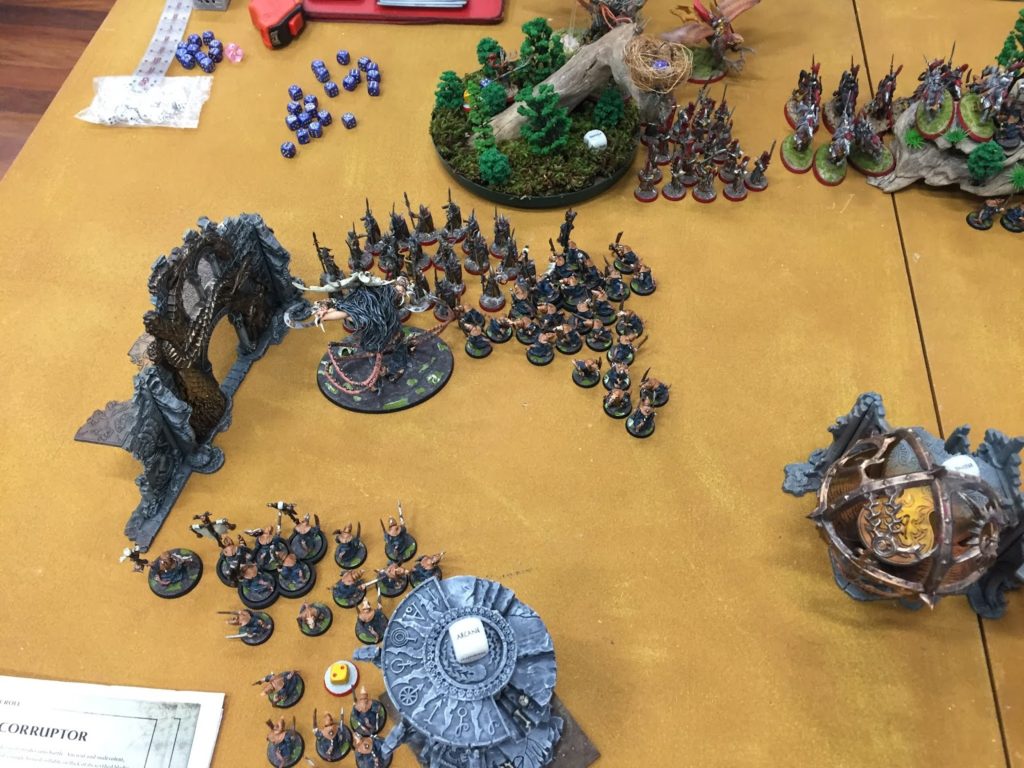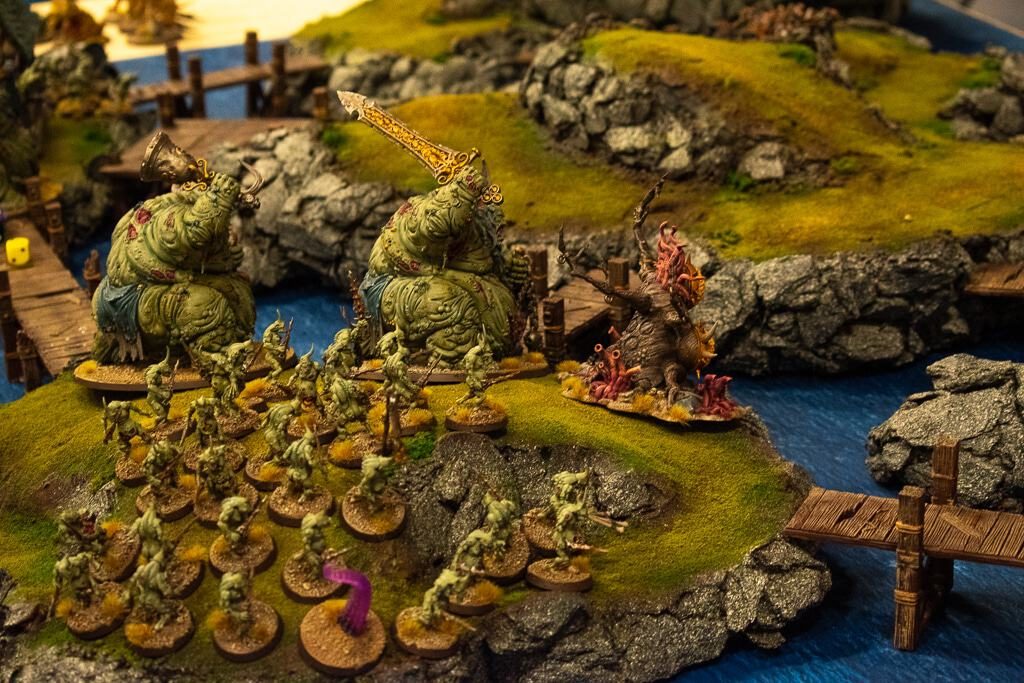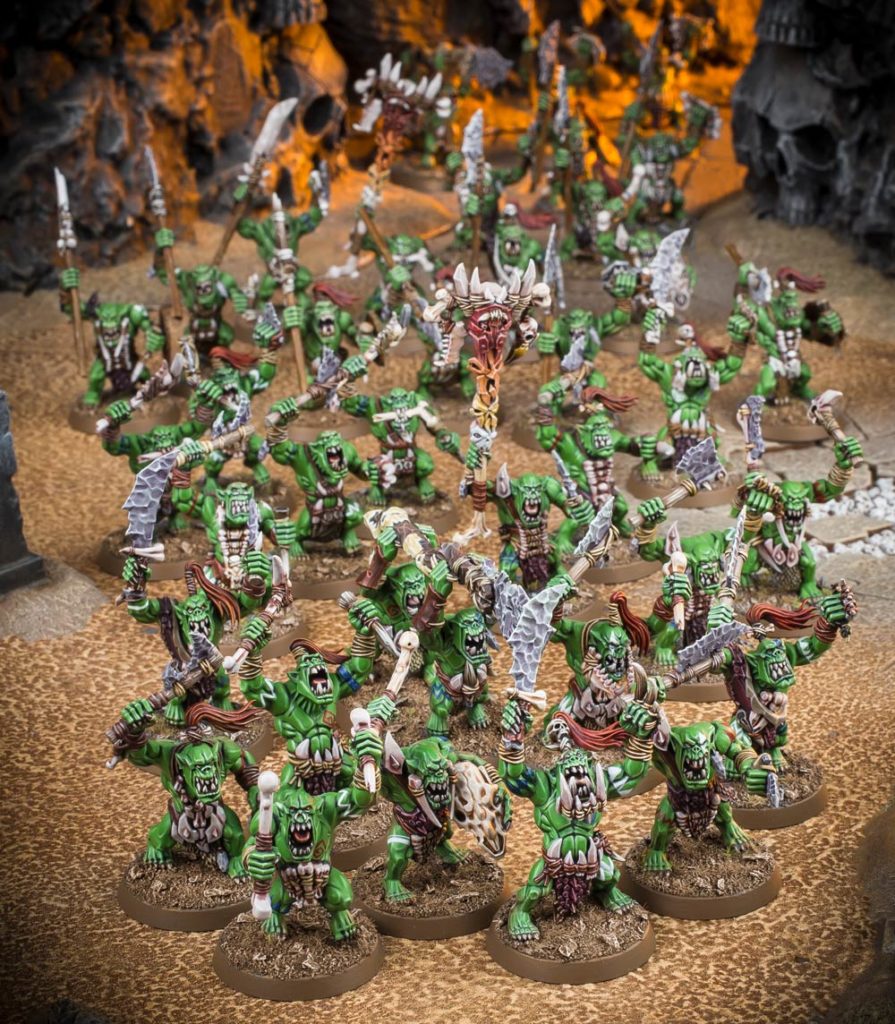A tournament and general staple of Age of Sigmar, let’s discuss how to do well in Total Conquest.
There is something to be said for the classics. Seeing slight adjustment over the years, Total Conquest (and its predecessor) has become a common mission at tournaments and in game rooms alike, in part due to its thoughtful, and straight forward design.

The Mission: Total Conquest
In Total Conquest, players battle over four objectives. Utilizing a twist on corner deployments, each player will have a home objective which is clearly initially theirs, as well as two equally distant to their deployment edges. Mirrored on the other side, players functionally launch the game each in possession of a strongly defensible point, and two tempting secondary objectives.
Units holding the objective are worth a VP at the end of one’s turn, with an additional VP scored if a friendly Leader unit is within 6” of an objective that they also control. Finally, a unit taken from an enemy who had control of a given objective scores a further VP.

How to Win:
This scenario rewards patience, with bursts of aggression. In a twist on normal AoS logic, having a greater number of unit drops can actually be somewhat advantageous. Players really only start with three meaningful options. One can deploy centrally, or spread, implying they want to try taking both “no man’s land” objectives, or they will go strong on one side or the other. In any of those cases, knowing where your opponent is likely to push first, is in your favor.
Total Conquest largely requires commitment to holding an objective, essentially permanently. Assume the score will be floating around a draw until someone begins taking held objectives. It is that third VP option that actually wins this scenario in most cases. Holding two objectives decisively is the bare minimum you must do to succeed, so start there. If a player over-commits to one side, consider doing the same on the other. This forces the game into one where players will have to gamble on how much of their force they can break off and reasonably expect to take an objective with.

Depending on the match-up and army compositions, this can be a scenario best played for the later turns. If you have stayed defensive, and broken a few waves of outriders against your lines, your own objective grabbers are far more likely to be able to earn their place in your lists, towards the end. Don’t sacrifice them for an early point, as the scenario means their deaths will just have been for nothing. The only caveat to this last point is made on a case by case basis. If your opponent has a particularly slow/immobile army, consider snagging a point you don’t intend to keep long term, IF you expect it will take them two turns to take it from you.
A final consideration is what to do if your opponent makes for both objectives. In this case, completely breaking them on one side will benefit you in the longer term. Concede a point or two on one side knowing the scenario mechanics will somewhat offset those, and an opponent divided is one likely to fail over the course of the game.
What Armies Does the Scenario Favor?:
Durability is extremely valuable in this scenario as losing an objective too quickly is literally worse than never having taken it at all. Patience is something less experienced players fail to utilize in competitive AoS, but outside of specific alpha-strikes, cagey play tends to be rewarded. Don’t go after objectives half-heartedly in this one!
Armies with strong, and mobile Leaders can have some new options in Total Conquest. From the mighty Ghoul King on Terrorgeist, to a Free Guild General on Gryphon, strong/fast Leaders can quickly shift less defended objectives, scoring a potential three VP for their trouble. If an opponent gives up this opportunity it may be the kind of point-swing they cannot recover from!
And remember, Frontline Gaming sells gaming products at a discount, every day in their webcart!



